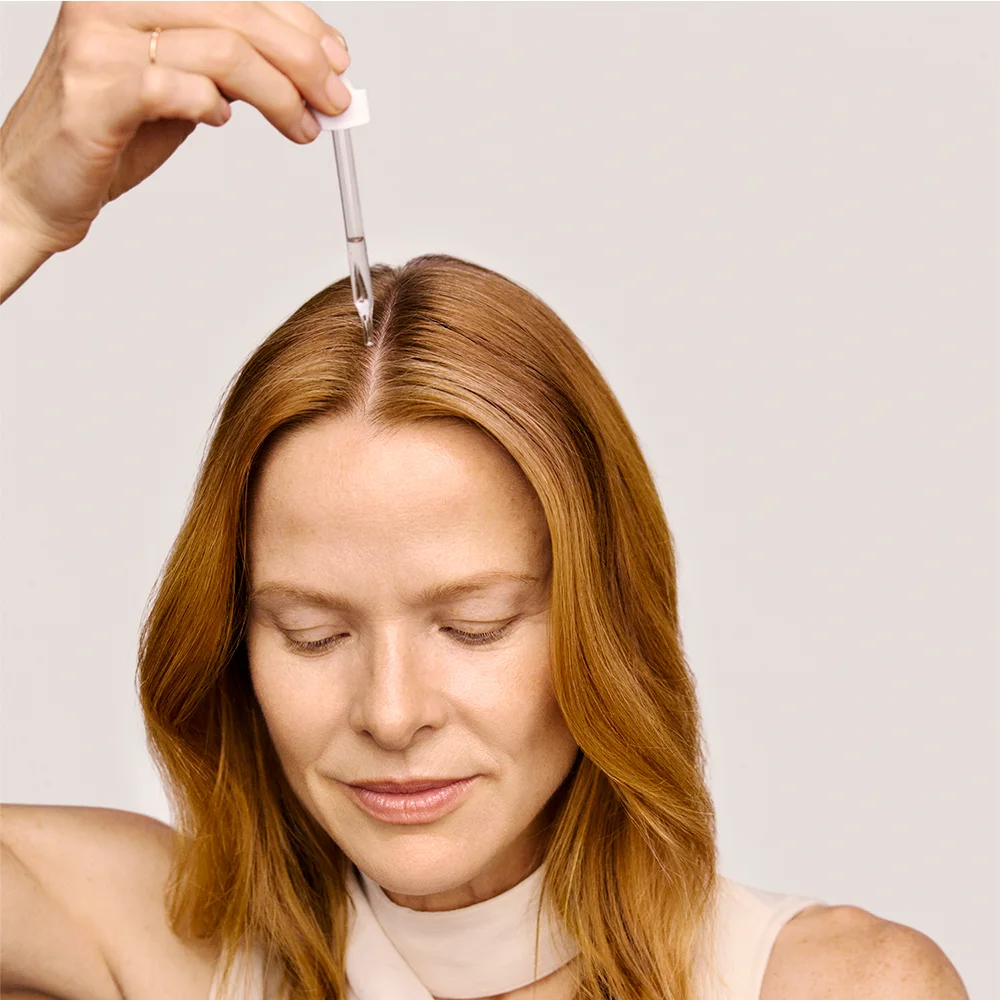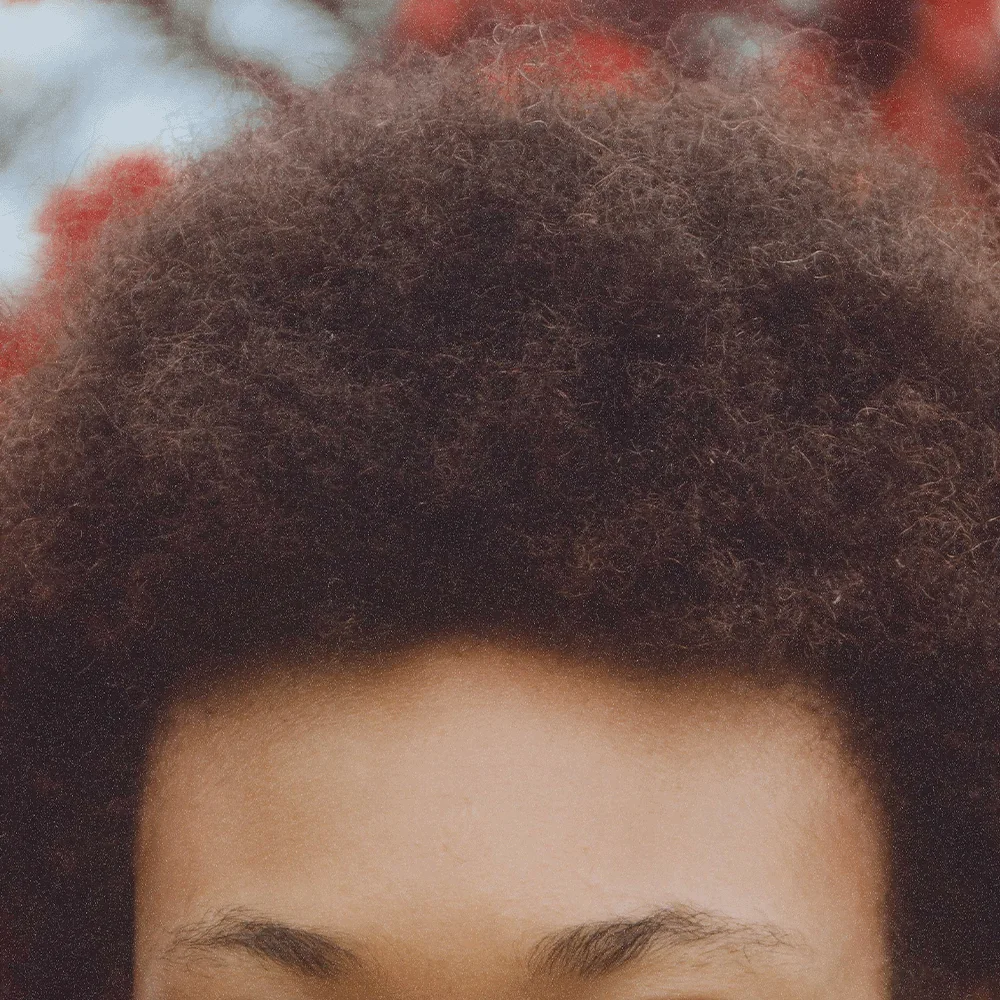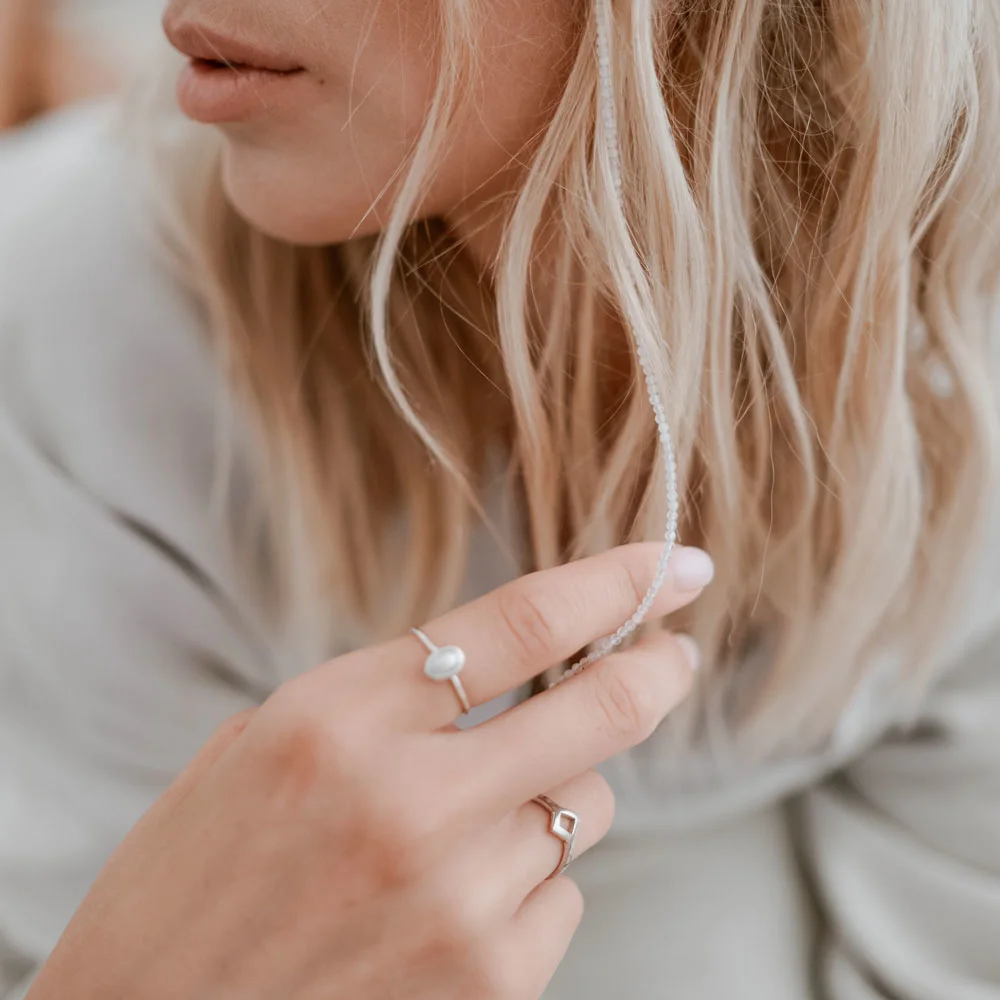Can women use minoxidil for hair loss?

Reviewed by Mike Bohl, MD, MPH, ALM,
Written by Chimene Richa, MD
last updated: Nov 02, 2021
6 min read
Here's what we'll cover
If you notice that your hair is thinner or your part is widening, you may be one of the millions of women affected by female pattern hair loss (FPHL), and you may see results from using a product like minoxidil for women (brand name Rogaine or Women’s Rogaine).
Unlike men, women do not usually go completely bald; instead, they may see a widening part, a thinner ponytail, recession of hair at the temples, or some combination of the three. Fortunately, the FDA approved the hair regrowth treatment, minoxidil, for women; the one caveat being that it has different dosage requirements than it does for men (more on that later).
Let’s look at why female pattern hair loss occurs and what kinds of treatments, including minoxidil, are available for women experiencing hair loss or hair thinning.
Can women use minoxidil (Women’s Rogaine)?
Women can use minoxidil (brand name Rogaine or Women’s Rogaine). Initially made for use only in men, minoxidil is now an FDA-approved, over-the-counter medication for male and female hair loss. In fact, according to the American Academy of Dermatology, it is the most recommended treatment for female pattern hair loss, and studies show that it significantly increases total hair count leading to fuller hair after using it for 24 weeks (Fabbrocini, 2018; AAD, 2020).
There are two forms available: a 2% topical solution and a 5% topical foam. A 5% topical solution also exists, but it is currently only approved for use in men.
Minoxidil and female pattern hair loss
Having a hair loss treatment on the market like minoxidil for women is important because female pattern hair loss is quite common. It can begin in women as early as their 20s and affects almost 25% of women by 50 years of age. By the age of 79, over 50% of women have some degree of hair loss (Fabbroncini, 2018).
FPHL is likely due to a combination of factors. Still, since there are more cases of female pattern hair loss after menopause, hormonal changes are likely involved in some way—scientists are still piecing together this part of the puzzle (McMichael, 2020).
There also seems to be a genetic component to this condition, and many women with thinning hair have a family history of hair loss. The genes for female pattern hair loss can come from your mother, father, or both. However, there is no definitive inheritance pattern, and there may be multiple genes involved (McMichael, 2020).
While FPHL is the most common type of hair loss in women, other things can cause hair thinning, including pregnancy, harsh styling products or dyes, medications, nutritional deficiencies, and stress (Van Zuuren, 2016; Dinh, 2007).
Hair loss in women is usually progressive—this means that if left untreated, you will likely continue to lose hair. Even though women do not usually go fully bald as men often can, many desire treatment. Fortunately, treatments like minoxidil are available.
How does minoxidil for women work?
Minoxidil works for women the same way it does for men— by dilating your blood vessels, which encourages more blood and nutrient flow to your hair follicles, leading to fuller hair. Scientists don’t know the exact mechanism by which minoxidil prevents hair thinning, but it seems to keep hair in the active growing phase (anaphase) for longer (Fabbrocini, 2018).
How should women use minoxidil?
Minoxidil is a topical treatment, meaning that you apply it directly to your scalp, not your hair. Typically, dosing instructions are as follows :
Minoxidil 5% topical foam: Apply ½ a capful once daily
Minoxidil 2% topical solution: Apply 1 mL two times a day
Generally, the guidelines for applying minoxidil are to massage it into your scalp with your fingers and make sure to wash your hands immediately afterward. Ideally, apply the treatment at least two hours before bedtime to allow it to dry completely—this may help prevent the minoxidil from spreading to other parts of the body while you sleep. Minoxidil can also stain clothing or bed linen if your scalp is not fully dry after using the treatment.
One important thing to note is that it has to be used daily to maintain results. Once you stop treatment, hair loss will return within three months.
Minoxidil side effects in women
Fortunately, minoxidil has relatively few side effects; these include scalp irritation, scalp dryness, redness, scaling, and/or itching. However, during the first few months of using minoxidil, you may notice increased shedding of your hair—this will improve after the first few months, so don’t give up on the treatment. If you do not notice an increase in the amount of hair regrowth after a few months of use, talk to your healthcare provider.
Another possible side effect is an increase in hair growth on the forehead or face. This may be due to accidentally applying the minoxidil to your face or forehead instead of limiting it to your scalp.
Some women also notice a change in their hair color and/or texture after using minoxidil. If this happens stop using the product, and speak with your healthcare provider if you notice any of the above side effects or if you develop chest pain, rapid heartbeat, faintness, dizziness, weight gain (sudden, unexplained), or swelling of the hands or feet (MedlinePlus, 2017).
Minoxidil and pregnancy
If you are pregnant or plan to become pregnant, you should avoid using minoxidil. Traces of minoxidil can pass into breast milk, so breastfeeding women should also avoid minoxidil (Dinh, 2007; LactMed, 2018). Talk to your healthcare provider if you have any questions or concerns about the side effects or safety considerations of this popular hair regrowth treatment.
Other treatments for female pattern hair loss
While minoxidil is usually the first treatment used in female pattern hair loss, other options are available. These include prescription pills, light therapy, microneedling, platelet-rich plasma, and hair transplants. Some treatments, like the medication finasteride (brand name Propecia), are proven to treat hair loss; while others, like laser therapy, still need more research to see if they are truly effective.
Finasteride Important Safety Information: Read more about serious warnings and safety info.
Medications
Oral prescription medications that affect hormone levels may work for women who have a hormonal component to their hair loss. Most of these medications are prescribed “off-label”—this means that they are not FDA-approved to treat hair loss in women, but are approved for other conditions. Examples of these treatments include finasteride (FDA-approved for treating hair loss in men and in post-menopausal women), spironolactone, flutamide, or dutasteride.
Laser therapy
Laser therapy, also known as low-level light therapy (LLLT), is a treatment for female pattern hair loss that you can do at home, but it’s not shown to be very effective.
There are no standard dosing regimens, but a few studies show that LLLT may effectively treat hair loss and stimulate hair regrowth (Fabbrocini, 2018). The FDA has approved low-level light therapy devices (combs, helmets, and other devices) to treat both male and female hair loss, but there is a need for more research in this area (Dinh, 2007).
Microneedling
Microneedling is a minimally invasive procedure that is under investigation as another potential option for women with female pattern hair loss. During a microneedling session, a healthcare provider or technician rolls fine needles over the skin of the scalp to puncture the upper layers of the scalp. The tiny punctures trigger a wound healing response that releases growth factors and may help stimulate hair growth (Fabbrocini, 2018).
Also, the wounds can improve the penetration of topical medications, like minoxidil. A few small studies show that microneedling—especially when paired with hair-growth-promoting remedies—can help hair regrowth (Fabbrocini, 2018). Additional research would be useful to determine how effective microneedling may be.
Platelet-rich plasma injections
Researchers are studying platelet-rich plasma (PRP) as a treatment for hair loss. During a PRP treatment, there is a collection and separation of the blood into different parts. Platelets, one of the components of blood, are what receive the treatment. A healthcare provider then injects the platelet-rich plasma into your scalp. PRP has growth factors that may stimulate hair growth, and some surgeons use this therapy in conjunction with hair transplantation. Early clinical results are promising, but there is a need for more research to determine the effectiveness of this treatment in female pattern hair loss (Fabbrocini, 2018).
Hair transplantation
Hair transplantation is the most invasive treatment for hair loss. It involves surgery to physically move hair follicles from one part of your scalp to the area of hair thinning.
Hair transplants are not for everyone. Healthcare providers usually reserve them for people who have already tried medical treatment without success, and some surgeons combine hair transplants with platelet-rich plasma therapy. Unfortunately, most medical insurance plans do not cover hair transplant surgery, so cost may be an issue for some people (Fabbrocini, 2018).
Less effective female hair loss treatments
There is no proof that nutritional supplements like folic acid, omega-3 fatty acids, biotin, and zinc work in treating hair loss. Studies looking at these therapies show mixed results.
The bottom line: Is minoxidil safe for women?
Topical minoxidil is safe for women to use as long as they follow the recommended dosing instructions. It can not only help with the physical effects of female pattern hair loss but, as your hair begins to fill in, it can provide a secondary boost psychologically as well. Many women feel that their hair is an integral part of their body image, affecting their feelings of attractiveness and femininity, so minoxidil may be worth trying if your female pattern hair loss is causing feelings of self-consciousness .
If you are concerned that you may be experiencing female pattern hair loss, talk to your dermatologist or healthcare provider about your symptoms and treatment options.
DISCLAIMER
If you have any medical questions or concerns, please talk to your healthcare provider. The articles on Health Guide are underpinned by peer-reviewed research and information drawn from medical societies and governmental agencies. However, they are not a substitute for professional medical advice, diagnosis, or treatment.
American Academy of Dermatology (AAD) - Thinning Hair And Hair Loss: Could It Be Female Pattern Hair Loss? (n.d.) Retrieved on June 15, 2020 from https://www.aad.org/public/diseases/hair-loss/types/female-pattern
Dinh, Q., & Sinclair, R. (2007). Female pattern hair loss: Current treatment concepts. Clinical Interventions in Aging, 2 (2). 189–199. Retrieved from https://www.ncbi.nlm.nih.gov/pmc/articles/PMC2684510/
Drugs and Lactation Database (LactMed). (2018). Minoxidil. Bethesda (MD): National Library of Medicine (US). Retrieved from https://www.ncbi.nlm.nih.gov/books/NBK501032/
Fabbrocini, G., Cantelli, M., Masarà, A., Annunziata, M., Marasca, C., & Cacciapuoti, S. (2018). Female pattern hair loss: A clinical, pathophysiologic, and therapeutic review. International Journal Of Women's Dermatology , 4 (4), 203-211. doi: 10.1016/j.ijwd.2018.05.001. Retrieved from https://pubmed.ncbi.nlm.nih.gov/30627618/
McMichael, A. (2020) Female pattern hair loss (androgenetic alopecia in women): Pathogenesis, clinical features, and diagnosis. In M. Hordinsky & A. O. Ofori (Eds.). Retrieved 15 June 2020 from https://www.uptodate.com/contents/female-pattern-hair-loss-androgenetic-alopecia-in-women-pathogenesis-clinical-features-and-diagnosis
MedlinePlus. (2017). Minoxidil topical . Retrieved 2 November 2021 from https://medlineplus.gov/druginfo/meds/a689003.html
Van Zuuren, E., Fedorowicz, Z., & Schoones, J. (2016). Interventions for female pattern hair loss. Cochrane Database Of Systematic Reviews . doi: 10.1002/14651858.cd007628.pub4 . Retrieved from https://pubmed.ncbi.nlm.nih.gov/27225981/










